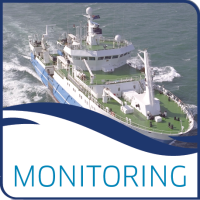Scottish Marine and Freshwater Science Vol 7 No 22
This report covers the polycyclic aromatic hydrocarbon (PAHs) and n-alkane analysis of farmed mussels and salmon (liver and muscle) from Loch Roag following the Transocean Winner rig grounding incident, August 2016. Samples were collected from three fish farms and three shellfish farms in Loch Roag on 10/11, 16/17 and 23 August. PAH concentrations were low on all sampling occasions, with a number of PAHs being below the limit of detection. Concentrations were at background levels in both the mussels and in the salmon muscle. n-Alkane profiles showed no evidence of petrogenic contamination. In addition, sensory analyses of the salmon muscle samples were undertaken and no taint was detected in any of the samples.
Data and Resources
| Field | Value |
|---|---|
| Publisher | |
| Modified | 2020-01-07 |
| Release Date | 2016-11-28 |
| Identifier | b4286cd9-0e17-4100-a0cb-271691e42ff5 |
| Spatial / Geographical Coverage Location | Scotland |
| Temporal Coverage | 2016-07-31 to 2016-11-30 |
| License | UK Open Government Licence (OGL) |
| Author | |
| Data Dictionary | As a precaution, the Environment Group requested samples to be collected from three mussel and three salmon aquaculture sites (Figure 1). The shellfish samples were collected by a Food Standard Scotland (FSS) sampling officer on 10 August 2016 and again on 16 and 23 August 2016. Details of the sampling sites are shown in Table 1. Salmon samples were taken from fish farms, detailed in Table 1, by the Local Authority in the area on 11 August 2016 and again on 16/17 and 23 August 2016. Approximately 30 mussels of a similar size range (shell length 40-60 mm) were collected at each site. The shells were rinsed in potable water to remove any surface debris, wrapped in aluminium foil and sealed in polythene bags which were then appropriately labelled. Samples were sent to Marine Scotland Science (MSS) in cool boxes with ice packs. Whole individual salmon were wrapped in tin foil, stored on ice, along with ice packs and returned to MSS. Samples arrived at MSS the day after collection. |
| Contact Name | Marine Scotland Science |
| Contact Email | |
| Public Access Level | Public |


